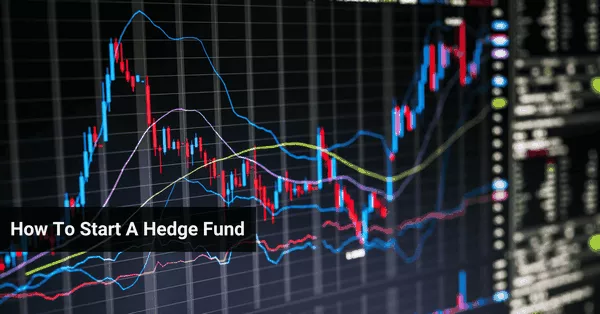SPDRs, short for Standard & Poor’s Depositary Receipts, are a type of investment vehicle that has gained immense popularity among investors. These exchange-traded funds (ETFs) offer a way for individuals and institutions to invest in a diversified portfolio of assets without the need for purchasing individual stocks or bonds. In this article, we will explore what SPDRs are, how they work, and their significance in the world of investing.
1. Understanding SPDRs
a. Definition
SPDRs, pronounced “spiders,” are a brand of ETFs managed by State Street Global Advisors. They are designed to track the performance of a specific index, sector, commodity, or asset class.
b. Structure
SPDRs are structured as trusts that hold a portfolio of assets, such as stocks, bonds, or commodities. Each SPDR share represents an ownership interest in the underlying assets held by the trust.
2. How SPDRs Work
a. Tracking an Index
One of the primary purposes of SPDRs is to track the performance of a particular index, such as the S&P 500 or the Dow Jones Industrial Average. When you invest in a SPDR linked to an index, your returns are tied to the movements of that index.
b. Exchange-Traded
SPDRs are traded on stock exchanges, just like individual stocks. This means you can buy and sell SPDR shares throughout the trading day at market prices.
c. Diversification
SPDRs provide investors with instant diversification. When you buy shares of a SPDR, you are essentially buying a piece of a diversified portfolio, which can help spread risk.
3. Significance of SPDRs
a. Accessibility
SPDRs provide individual investors with easy access to a wide range of asset classes and sectors that may have been difficult to invest in directly. This accessibility democratizes investing.
b. Liquidity
Because SPDRs are traded on exchanges, they are highly liquid. Investors can buy or sell them quickly and easily.
c. Low Expense Ratios
SPDRs are known for their low expense ratios compared to many mutual funds. This cost efficiency can contribute to higher net returns for investors.
d. Transparency
SPDRs provide transparency into their holdings. Investors can easily see what assets the ETF holds, which enhances their ability to make informed investment decisions.
4. Examples of SPDRs
Some well-known SPDRs include SPY (SPDR S&P 500 ETF Trust), XLF (Financial Select Sector SPDR Fund), and GLD (SPDR Gold Trust), each of which tracks a specific index or asset class.
In conclusion, SPDRs, or Standard & Poor’s Depositary Receipts, are exchange-traded funds that provide investors with a convenient and cost-effective way to gain exposure to various asset classes and sectors. They offer accessibility, liquidity, diversification, and transparency, making them a significant investment option in the modern financial landscape. Whether you’re a novice investor looking to start building a diversified portfolio or an experienced investor seeking efficient exposure to specific market segments, SPDRs can be a valuable tool in achieving your investment goals.
FAQs About SPDRs (Standard & Poor’s Depositary Receipts)
1. What does SPDR stand for?
SPDR stands for Standard & Poor’s Depositary Receipts. It is pronounced as “spiders.”
2. What exactly is a SPDR?
A SPDR is an exchange-traded fund (ETF) that aims to track the performance of a specific index, sector, commodity, or asset class. It allows investors to buy shares representing an ownership interest in a diversified portfolio of assets.
3. How do SPDRs differ from traditional mutual funds?
SPDRs, like other ETFs, are traded on stock exchanges and can be bought and sold throughout the trading day at market prices. Traditional mutual funds, on the other hand, are typically bought and sold at the end-of-day net asset value (NAV) price.
4. What is the primary purpose of SPDRs?
The primary purpose of SPDRs is to provide investors with exposure to a specific market segment or index. They are designed to mirror the performance of the underlying index or asset class.
5. Can I trade SPDRs like individual stocks?
Yes, SPDRs are exchange-traded and can be traded just like individual stocks. They are highly liquid and can be bought or sold during market hours.
6. How are SPDRs structured?
SPDRs are structured as trusts that hold a portfolio of assets, such as stocks, bonds, or commodities. Each SPDR share represents a fractional ownership interest in the assets held by the trust.
7. What are some examples of well-known SPDRs?
Some examples of well-known SPDRs include SPY (SPDR S&P 500 ETF Trust), XLF (Financial Select Sector SPDR Fund), and GLD (SPDR Gold Trust). These ETFs track various indices and asset classes.
8. What are the advantages of investing in SPDRs?
The advantages of investing in SPDRs include accessibility to diversified portfolios, liquidity, low expense ratios, transparency, and the ability to gain exposure to specific market segments or asset classes.
9. Are SPDRs suitable for all investors?
SPDRs can be suitable for a wide range of investors, from beginners to experienced professionals. However, as with any investment, it’s essential for investors to understand their goals, risk tolerance, and investment horizon before choosing SPDRs.
10. Are there any downsides to investing in SPDRs?
While SPDRs offer numerous advantages, they are subject to market risks, and their returns are tied to the performance of the underlying assets or indices. Additionally, like all investments, they are not guaranteed to generate positive returns.


